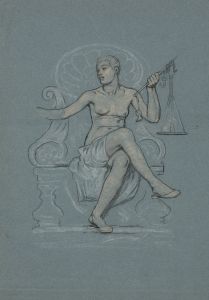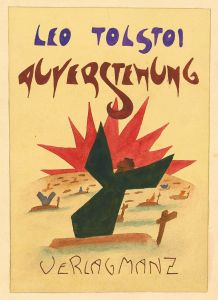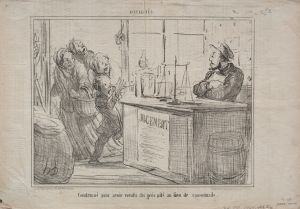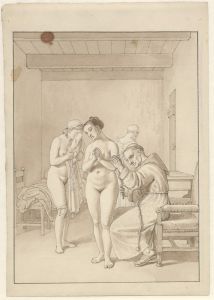
Study for figure in Corrupt legislation without scale
A hand-painted replica of Elihu Vedder’s masterpiece Study for figure in Corrupt legislation without scale, meticulously crafted by professional artists to capture the true essence of the original. Each piece is created with museum-quality canvas and rare mineral pigments, carefully painted by experienced artists with delicate brushstrokes and rich, layered colors to perfectly recreate the texture of the original artwork. Unlike machine-printed reproductions, this hand-painted version brings the painting to life, infused with the artist’s emotions and skill in every stroke. Whether for personal collection or home decoration, it instantly elevates the artistic atmosphere of any space.
Elihu Vedder's "Study for Figure in Corrupt Legislation Without Scale" is a preparatory drawing or study created by the American artist Elihu Vedder (1836–1923). Vedder was a prominent painter, illustrator, and poet associated with the Symbolist movement, known for his allegorical and often socially critical works. This particular study is connected to his larger project, "Corrupt Legislation," which was part of a series of murals commissioned for the Library of Congress in Washington, D.C.
The murals, completed in the late 19th century, were part of the decoration for the Library's Thomas Jefferson Building, which opened in 1897. Vedder was one of several artists selected to contribute to the building's elaborate artistic program, which aimed to celebrate knowledge, culture, and the ideals of democracy. His contributions included a series of allegorical paintings that explored themes such as government, justice, and morality.
"Corrupt Legislation" is one of Vedder's most notable works from this series. It depicts a seated female figure representing the concept of corrupt governance. The figure is shown holding broken scales, symbolizing the failure of justice, and surrounded by imagery that underscores the consequences of unethical leadership. The study for this figure likely served as a preparatory work, allowing Vedder to refine his composition and the details of the allegorical representation before executing the final mural.
Vedder's work for the Library of Congress reflects his interest in using art to convey moral and philosophical ideas. His Symbolist approach often employed allegory and metaphor to address complex social and political issues, making his work both visually striking and intellectually engaging. The study for "Corrupt Legislation" exemplifies his meticulous process and his commitment to creating art with a deeper meaning.
The original study, like many of Vedder's preparatory works, provides insight into his creative process and the development of his ideas. It is valued not only as a piece of art in its own right but also as a historical document that sheds light on the artistic and cultural priorities of the late 19th century in the United States.
















